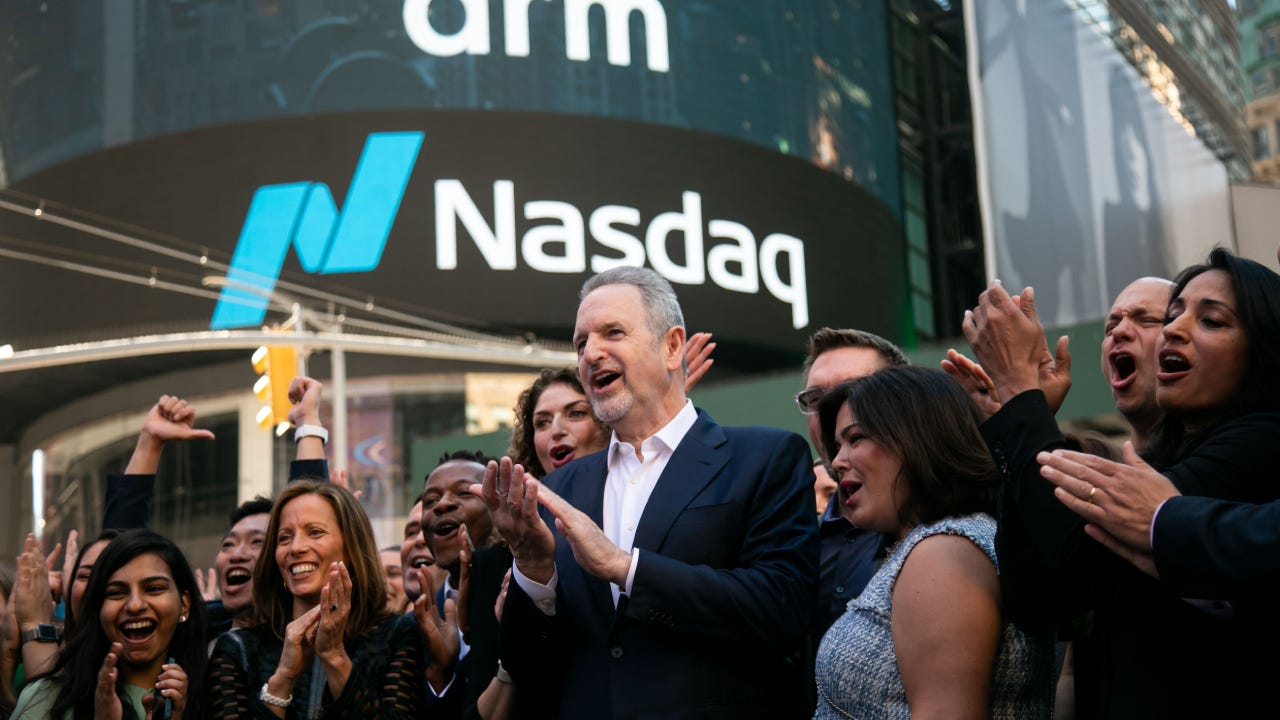The 10 largest American IPOs of all time

The Bankrate promise
At Bankrate we strive to help you make smarter financial decisions. While we adhere to strict , this post may contain references to products from our partners. Here's an explanation for .
After being mostly closed for 2022 and most of 2023, the market for initial public offerings (IPOs) finally started to open up in late 2023. A number of high-profile IPOs such as Instacart and Arm Holdings finally made their debuts after years of speculation about when they would go public.
But as big as some of these late-2023 offerings were – Arm Holdings the notable exception – they’re still much smaller than the biggest IPOs of all time in the U.S. In fact, to crack the top 10 list, companies need to have a valuation of more than $54 billion when their IPO is priced.
Here are the top 10 largest American IPOs by initial valuation.
| Company | Initial IPO valuation | IPO date |
|---|---|---|
| Source: Reuters | ||
| Alibaba (BABA) | $169.4 billion | Sept. 2014 |
| Facebook, now Meta Platforms (META) | $81.3 billion | May 2012 |
| Uber Technologies (UBER) | $75.5 billion | May 2019 |
| AT&T Wireless | $68.2 billion | April 2000 |
| Rivian Automotive (RIVN) | $66.5 billion | Nov. 2021 |
| DiDi Global (DIDIY) | $61.0 billion | June 2021 |
| United Parcel Service (UPS) | $60.2 billion | Nov. 1999 |
| Coupang (CPNG) | $60.0 billion | Mar. 2021 |
| ENEL (ENLAY) | $54.9 billion | Oct. 1999 |
| Arm Holdings (ARM) | $54.5 billion | Sept. 2023 |
This list includes IPOs by what they priced at before they debuted, that is, the total market capitalization – the value of all the company’s stock – when the investment banks sold the stock. So it’s not the valuation at the end of the first day of trading, when IPOs have notably soared.
It’s also worth noting that this list does not show how much money the company raised in the offering. Often, new companies sell only a modest portion of the total available stock.
Should you buy IPOs?
Despite their first-day headlines – or perhaps because of them – IPOs tend to be typically bad performers after their debut, though they may wind up doing well over time.
Research from Bain & Company shows that about two-thirds of global IPOs from 2010 to 2014 underperformed publicly listed peers over a five-year period. Perhaps the most astounding part is that the median IPO stock underperformed by a whopping 46 percentage points in total.
So why do IPOs tend to underperform so much? Here are a few key reasons:
- IPOs are hyped: IPOs are some of the most talked-about stocks on the planet, and that’s a result of the hype process that goes into selling them. Investment banks that underwrite the IPO are interested in selling the shares to institutional investors and others, and even those buyers may be interested in selling in short order. So a lot of people are interested in promoting an IPO as a hot ticket.
- IPOs come out at a period of high optimism: IPOs often debut during a relatively hot market, meaning that investors’ risk appetite is relatively high. When the market is stable or bullish, companies rush to hit the IPO funding window since they think they may be able to get an attractive price – that is, attractive to the seller – for their stock.
- IPOs are underpriced initially: The first-day pop that IPOs are almost legendary for is not evidence that an IPO is successful but rather that it was underpriced relative to the demand that exists for the shares. Ultimately, if a stock soars, it indicates that the newly public company could have raised more money than it did – a real loss for the firm itself.
- Low initial public float: Many companies sell only a relatively small fraction of its total outstanding stock, say, 10 or 20 percent. That small amount means that not everyone who wants the stock can get it, so if they rush to buy the stock on the first day, they’ll push the price higher, a typical occurrence. (Here’s how to buy IPO stock.)
For these reasons, IPOs tend to be a low-quality fishing hole for investors. After all, if the stock is such a great investment, why are insiders cutting in the public for a slice? There may be a good reason – such as the firm raising capital to expand quickly – but often insiders see an IPO only as an exit strategy for their investment. With capital available in private markets, many new companies are staying private longer, allowing their backers to capture more of the upside.
Savvy investors often turn to stock spinoffs as a source of unpromoted stocks that can fly under the radar of most investors. They’re not promoted issues, so they don’t get the hype that IPOs do, and few people have an incentive to let you know about them. Plus, insiders such as executives may like to keep the stock price lower until they get big stock and options packages.
Bottom line
While IPOs capture the headlines and investors’ interest, they tend to be poor investments except for those investors who are able to get in before the IPO and enjoy the first-day pop. One notable exception here, however, is mutual thrift banks, which have a strong record of returns, though even they too can remain flat after their IPO before going on to offer better returns.
Related Articles



